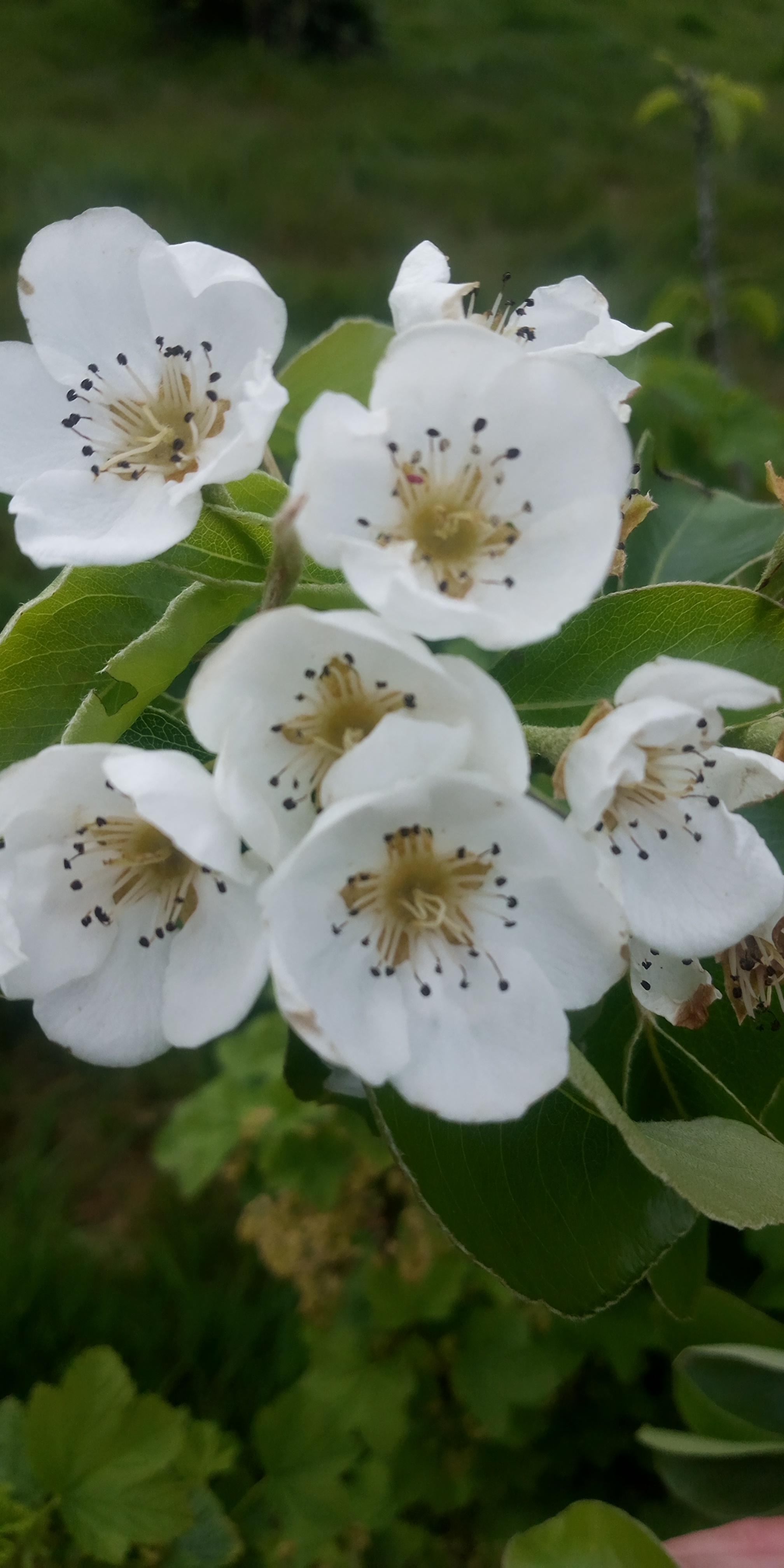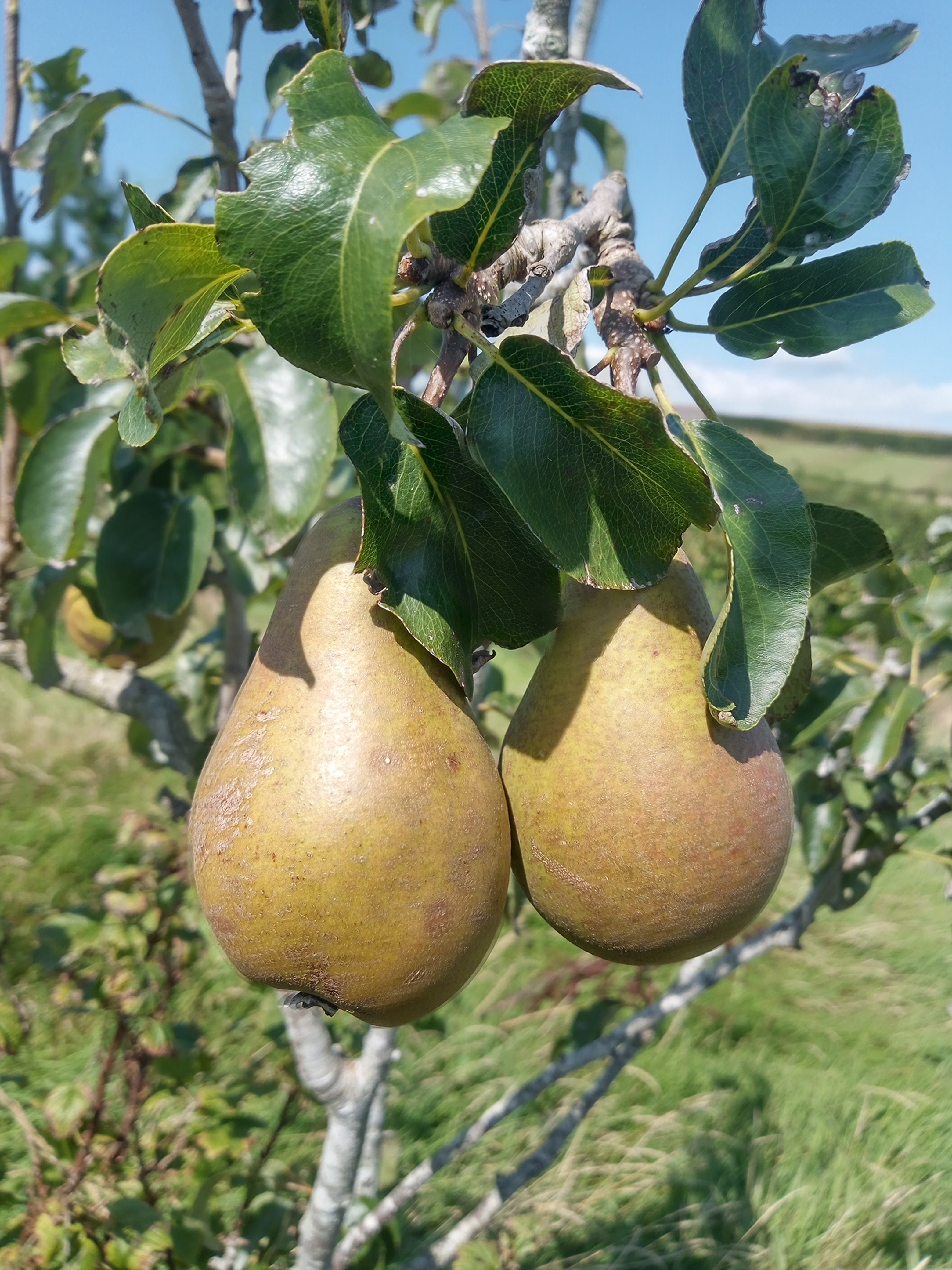Blossom is one of my favourite words.
Watching a newly unfurled bloom tremor in the wind is one of the most beautiful sights in nature. The symmetry of a bloom is a timeless piece of perfection. Nature in perfect order can be observed as a flower and means that there is order in the universe.
I want to dedicate this post today as a homage to our Permaculture Orchard, which, I absolutely love.

The millions of blossoms that our Orchard contains are rich in delicate scent and attract many, many types of pollinating insects.
Look at the purity of these five-cupped petals, the five pointed star in the centre, the little dots are anthers. The cluster of blossom pictured here is a wonder to the eye and an insect magnet. Insects feast on the nectar, guided in by the scent and the symmetry. They pollinate as they sup, then leave to find another bloom. These flowers will turn into pears. Juicy, sweet and massive. Fully ripened, ready to eat, the star at the flower centre can still be found, located at the very base of the fruit and discarded once the meal is done. And now the flowers are blooming again, it is Spring now again and the whole cycle begins all over again. The insects are buzzing with joy.
 We are helping the insects at Pemberton Farm in a number of ways. We look after them, so that they can provide us with abundant crops as they pollinate each bloom.
We are helping the insects at Pemberton Farm in a number of ways. We look after them, so that they can provide us with abundant crops as they pollinate each bloom.
What we do, is provide the insects with abundant and varied flowers where they find nectar in our very sheltered and protected area.
There are abundant May flowers in the hedges that surround our land, belonging to the Sloe or Blackthorn tree. We do not cut the hedges frequently, the last time they were cut was five years ago. This has enabled them to fully recover and flower abundantly. We have enjoyed many crops of blackberries from the blackberry bushes. We have made Sloe Gin from the abundant sloes from the Blackthorn. The fruit trees we planted in 2016 are now really coming into their own.
Our orchard trees also comprise Cherry, Apple, Medlar and Quince and Elder and Plum. The variety of trees is partly experimental to see how they fare in our climate and region, the results look promising so far.
We encourage the pollinators to pollinate the trees by planting tree guilds around the base of the tree, Artichoke, Blackcurrant and Comfrey.
These plants are sublayers, and are highly attractive to bees and other pollinating insects and fare very well at our farm indeed, providing protection, supressing grass growth and sheltering our growing trees. So far it looks like we are going to have an abundant currant crop again this year. But look at the companionship here between the Pear and the Blackcurrant, the contrast of leaf shape, habit and form, yet both yielding and supporting abundant life.
When I consider the success of these guilds I am enormously encouraged that companionship planting is really fantastic way of planting, a little bit messy, a little bit disorganised and untidy, but look at the yield and the beauty of that union!
Here we have broad leaved Russian Comfrey, Currants and Medlar all planted together and thriving in unison.
Comfrey has a special quality of gathering nutrients from deep beneath the soil and bringing them to the surface as a mulch for the trees. It also brilliantly suppresses grass growth around the tree at once feeding it and inhibiting competition for nutrients enabling the plants we love to thrive.
Nature teaches us that we need to work together to get the best results and work as far as possible using each others strengths. Companionship is the key.
At Pemberton Farm, we look forward to working with you in 2022.
With good wishes


Comments are closed, but trackbacks and pingbacks are open.